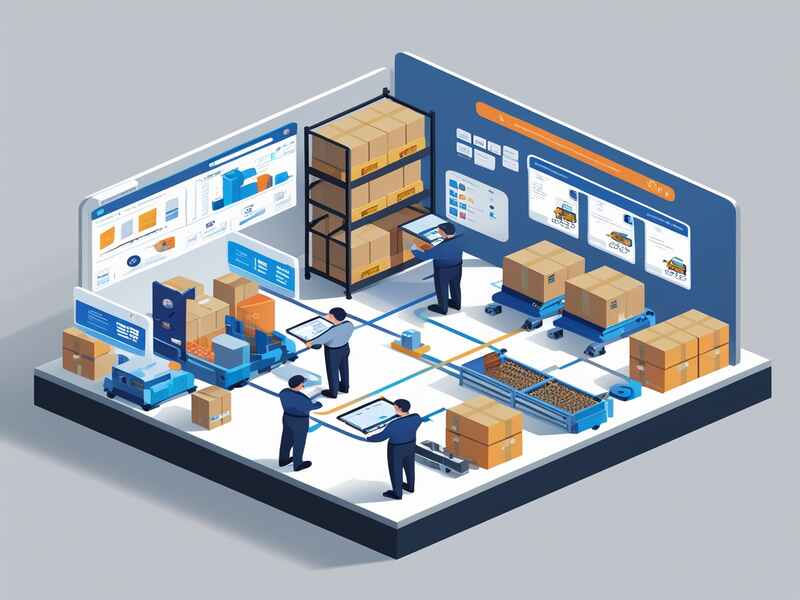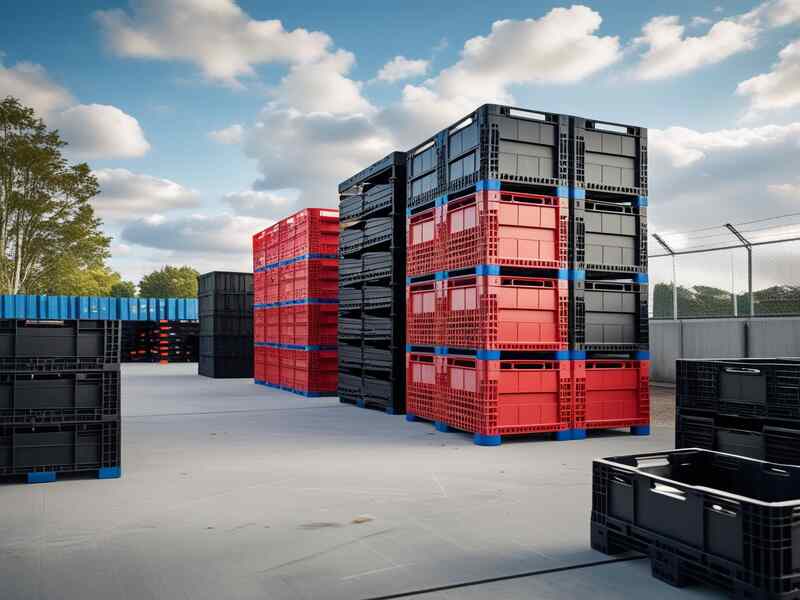SAP IS Retail Tutorial
Introduction to SAP IS Retail
SAP IS Retail is a comprehensive enterprise resource planning (ERP) solution tailored specifically for retail use, featuring resources for managing and optimising important retail functions such as supply chain management, CRM, inventory control management, sales procedures and procurement.
SAP IS Retail provides retailers with an end-to-end strategy that encompasses their entire retail value chain from point-of-sale through procurement.
To satisfy customer demands and maximize profitability, this solution equips merchants with tools for pricing management, promotions management, inventory planning and demand forecasting.
Inventory Management System
An Inventory Management System involves allocating resources and inventory across stores located in different locations.
The system ensures that each truck serving multiple stores along the same route is fully loaded without leaving any spaces for losses to accrue – an essential factor when spending significant sums of money on transportation, which often results in lost money for companies.

To optimize their transportation system, companies must invest in appropriate equipment and materials, such as trucks and trailers, in order to properly manage and distribute inventory.
Furthermore, companies should make sure the inventory is stored and labeled to reduce losses and ensure optimal management.
Replenishment Planning
Replenishment planning is an integral component of retail businesses, as it ensures merchandise reaches stores on schedule without running out. At its heart lies efficient and effective process management – this aspect ensures success for any retail operation.
Every business has their own system for replenishment; these algorithms and logics vary between companies.
If a company owns multiple stores that need stock delivered daily, however, transportation costs become prohibitively expensive due to complex logistics involved with supply chains that make understanding exactly where and when things need to be sent difficult.
Companies looking to save on transportation costs must also plan ahead for transportation needs and costs. To successfully meet or reduce transportation expenses, companies should pay attention to transport planning.
Requirement Planning
This planning aims to automate the process of providing merchandise at site levels, tracking stock levels and automatically triggering requirements without needing manual intervention from staff members.
Logic should take over where manual input fails – thus streamlining logistics processes as intended.
Daily tasks of the system involve scheduling job replenishments, dropping them for each store, and identifying stock that has run out.

Requirements are automatically generated by the program that runs it; each store can decide to raise or lower them depending on availability of stock.
Implementation of the system can either be done centrally or decentralized, depending on the level of organization.
Implementing it centrally could include purchasing level implementation while organization level implementation might include site level implementation as well.
Incorporating both approaches might create additional benefits.
The logic should be applied across various locations, with stores initially creating requirements that will then be carried out at different sites by a DC.
Once approved by authorities, this system can then execute those needs at each of those sites.
Implement the logic on various levels, from centrally through purchasing organizations or directly on site; stores should first generate requirements before sending them over for approval to a DC.
Distribution Process
The distribution process includes Distribution Chain (DC) providing stock directly to stores, collecting requirements and creating collective purchase orders for individual stores that do not carry all the needed inventory.
Once vendors provide these supplies back, it is redistributed among individual stores through various suppliers.

SAP IS Retail Training

Merchandise Distribution Process
The merchandise distribution process includes raising orders, supplying sites and then individual stores at specific times of year.
Timing of product introduction is essential as this allows stores to anticipate the arrival of stock while at the same time ensures it sells out during its designated season.
DCs analyze store performance by pushing more stock throughout each season based on customer demand for said stock.
Pull Process
The pull process entails analyzing store performance by pushing stocks at specific times throughout a season in response to demand for them, more or less seasonally. An introduction time period helps store staff prepare for new inventory during off-season arrival.
POI
The central point of inventory (POI), where sites are located, is an essential aspect of distribution. At this location, products are stored and sold; this POI helps ensure stores are adequately stocked before each season begins.

Central Point of Contact
At its heart is the central point of contact. Sites come here with their requirements for their requirements to be fulfilled and this approach takes an iterative top-down approach in raising profit requirements by moving merchandise from higher organizations down through different organizations.
Lower organizations or stores request stock from a DC, who then determine stock positions before serving merchandise directly or placing orders to vendors for fulfillment.
Consumption Value
Consumption values provide a measure of how much a store has sold over a particular timeframe – not simply how much was consumed at any one point in time.
Trend Algorithm
To generate a forecasted value, a trend algorithm can be used to examine sales periods over the last seven calendar weeks and compare them.
It will take into account what was similar in all seven weeks prior, which may cause an inflated figure to emerge during recent three weeks; however, due to less accurate information in those last three weeks the system will adjust it appropriately and normalize your data accordingly.
Utilizing a trend algorithm, the system will identify a peak in sales period – whether seasonal or otherwise – as determined by comparing days in each season with days from previous seasons. If sales period peaks occur, this peak will be normalized accordingly by the system.
Material Management
Inventory management’s material management function is another integral aspect. A simplified approach involves looking at purchase documents, purchase requisitions, purchase orders, sales requisitions and sales orders before taking action on inventory items.

Reorder Point Planning
It involves identifying optimal stock levels for each store to ensure efficient operations, emphasizing the need to balance demand with supply.
Automatic Reorder Point Planning involves dynamically identifying all static values of a store’s inventory. This approach is especially useful when no other stocks levels are readily available.
Safety Stock
Stakes refers to items stored in an accessible location but aren’t easily reachable by customers, with future reorder points taken into consideration as well.
UH algorithm is typically utilized when forecasting. While retail has only used limited models to forecast and represent their products, Hana offers more advanced forecasting and representation capabilities.

SAP IS Retail Online Training

Channel Process Distribution Chain
A key aspect of retail industry, this is an essential chain in terms of organization and distribution of products. It involves stores located all around the world forming this distribution system – which makes sure their products reach the right destination at an optimal price point.
Businesses rely on it as it ensures their products reach customers efficiently.

External Forecast
An external forecast is an obligatory process that considers both individual consumption and safety stock needs, dynamically calculated so as to maintain consistency of consumption between days.
When an even forecast exists, no buying will take place and days may be split according to desired usage levels.
Valuation and requirement planning are also critical in this process, and testing must take place prior to replenishment at both site-level and lot size levels. Refreshment types should be enabled at both levels to facilitate replenishment in an equitable way.
At the site level, replenishment must begin immediately upon arrival. Enabling replenishment type at this level is essential to the overall efficiency of the system; larger sizes should also enable lot size replenishment types at their sites.
Types of Master data
Retail stores require several kinds of master data in the form of material, store and merchandise categories to run effectively; each category possesses its own special properties that must be managed appropriately for instance SAP should always reflect exactly the same material category across systems.
Pricing and promotion are also integral parts of retailing, serving as master data in their own right.
When discussing stores, it is crucial to keep three specific objects in mind: customer, vendor and store.
How to Create Returnable Transport Packagings (RTP):
A RTP system allows a warehouse manager to organize multiple items at the same time in an organized fashion.
To begin creating one, begin by choosing your lot size and setting default levels; once these steps have been taken, plan your reorder point where reaction/stock calculations take place before adding items until your RTP becomes unavailable – repeat until RTP no longer available!
After this stage, the process moves on to transaction, where material is provided and an RTP type determined based on which article will be run.
Data provided includes specific article type, replenishment lead time and planning date as well as the RTP type that corresponds with this particular article type and date.
Custom-crafted program for managing inventory and replenishment requirements. Specifically tailored to manage static values such as stock levels, inventory quantities and order points that do not change with system.
Incorporating a reference article system that does not update these static parameters – instead the user must key in “get updated” function to do this themselves.
Once the replenishment requirements have been set, users can test out their program in test mode to ensure an order can be created without errors.
Purchase orders can be created based on specified stock levels, with the system creating transport orders directly to ZTC based on supply source information.

Furthermore, this system features an allocation table which always makes sense in relation to any non-allocation table information.
Planning steps for replenishment processes have been simplified while remaining complex enough for use with sophisticated algorithms.
The replenishment planning step involves several steps, such as creating and updating an inventory list. It’s also important to make sure the system stays informed with the current inventory levels; additionally there may also be an allocation table present which is relevant at any point during planning.
Conclusion
SAP IS Retail was built for retailers to help improve operations and customer experience by seamlessly integrating key business activities such as item management, sales, pricing promotions supply chain management and CRM management into daily workflows.
Advanced analytics and forecasts help retailers manage inventory, price plans, and marketing initiatives more effectively. SAP IS Retail provides a scalable platform that can grow with your business while accommodating market changes by connecting to other SAP solutions.
SAP IS Retail provides retailers with a solution for streamlining operations, increasing efficiency, and creating an exceptional shopping experience across channels in an ever-evolving market.
In order to unlock SAP IS Retail’s potential and achieve success in retail, it is necessary to understand the data that drives activities within this system and successfully configure it.

SAP IS Retail Course Price


Madhavi Koppadi
Author